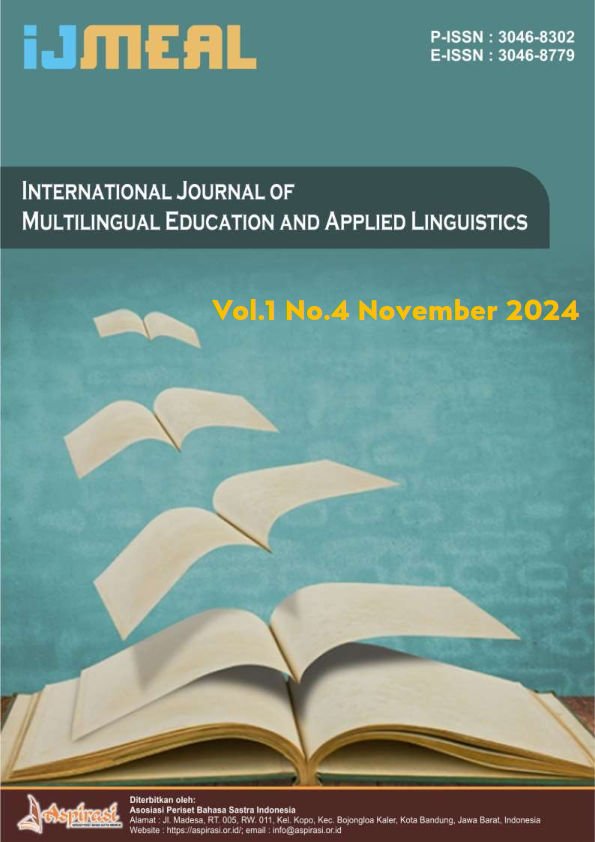Sentiment Discourse: An Intersection of News Text and Comments on Social Media
DOI:
https://doi.org/10.61132/ijmeal.v2i2.287Keywords:
Discourse, Engagement, Ideology, Media, SentimentAbstract
This study examines the intersection of sentiment discourse in news texts and user comments on Facebook Detikcom, focusing on government policies during the Covid-19 pandemic. The research explores institutional discourse in news articles that align with government narratives, while user comments reflect a spectrum of responses, from support to opposition. Using qualitative content analysis, this study applies critical discourse analysis (CDA) and sentiment analysis to examine linguistic strategies, ideological framing, and sentiment polarity. The data were taken from news texts and the comment section on Facebook Detikcom, collected through documentation and following several stages of observation, careful reading, selection, and classification. The findings show that social media transforms news consumption into a participatory discourse. This indicates that traditional narratives are challenged and reinterpreted by users. Sentiment clustering and engagement metrics further shape the visibility and influence of competing ideologies. This study contributes to digital discourse research by demonstrating that sentiment functions as an ideological tool in crisis communication. The analysis also highlights the evolving role of social media in public discourse and emphasizes the need for critical engagement with online news narratives and user-generated content.
References
Dordevic, J. P. (2022). Digital media discourse in linguistic research. https://doi.org/10.46630/dmd.2022
Kuteeva, M., & Mauranen, A. (2018). Digital academic discourse: Texts and contexts: Introduction. Discourse, Context & Media, 24, 1–7. https://doi.org/10.1016/j.dcm.2018.06.001
Fairclough, N. (1995). Media discourse (Vol. 6). Arnold Publisher.
Price, S., & Harbisher, B. (2022). Power, media and the Covid-19 pandemic. Routledge.
Usher, K., et al. (2021). Public sentiment and discourse on domestic violence during the COVID-19 pandemic in Australia: Analysis of social media posts. Journal of Medical Internet Research, 23(10), 1–11. https://doi.org/10.2196/29025
Haider, S., Luceri, L., Deb, A., Badawy, A., Peng, N., & Ferrara, E. (2023). Detecting social media manipulation in low-resource languages. ACM Web Conference 2023 - Companion to the World Wide Web Conference (WWW 2023), 1358–1364. https://doi.org/10.1145/3543873.3587615
Fairclough, N. (2013). Critical discourse analysis (2nd ed., Vol. 16, No. 1). Routledge.
Bouvier, G. (2015). What is a discourse approach to Twitter, Facebook, YouTube and other social media: Connecting with other academic fields? Journal of Multicultural Discourses, 10(2), 149–162. https://doi.org/10.1080/17447143.2015.1042381
Schiffrin, D., Tannen, D., & Hamilton, H. E. (2007). The handbook of discourse analysis (pp. 798–816). Blackwell. https://doi.org/10.1111/b.9780631205968.2003.00042.x
Vaisman, C. (n.d.). Digital discourse: Locating language in new/social media. Related papers.
Mohammadinodooshan, A., & Carlsson, N. (2023). Understanding differences in news article interaction patterns on Facebook: Public vs. private sharing with varying bias and reliability. arXiv. http://arxiv.org/abs/2305.11943
Omar, R. G., & Casero-Ripollés, A. (2023). The role of news post consumption on Facebook in shaping youth perceptions of safety and civil liberties during COVID-19 in the U.S., Spain, and Egypt. Human Behavior and Emerging Technologies. https://doi.org/10.1155/2023/6244063
Jovanovic, M., & Stankovic, I. (2024). Social media and political activism: How digital platforms shape civic engagement. International Journal of Humanities and Social Science Review, 1(1).
Cain, P., Donaghue, N., & Ditchburn, G. (2017). Concerns, culprits, counsel, and conflict: A thematic analysis of ‘obesity’ and fat discourse in digital news media. Fat Studies, 6(2), 170–188. https://doi.org/10.1080/21604851.2017.1244418
Thurlow, C., Durscheid, C., & Diemoz, F. (2020). Visualizing digital discourse. De Gruyter Mouton.
Fairclough, N. (2015). Language and power (3rd ed., No. February).
Georgalou, M. (2017). Discourse and identity on Facebook (Vol. 11, No. 1). Bloomsbury. http://scioteca.caf.com/bitstream/handle/123456789/1091/RED2017-Eng-8ene.pdf?sequence=12&isAllowed=y
Liu, B. (2015). Sentiment analysis: Mining opinions, sentiments, and emotions (pp. 1–363). Cambridge University Press.
van Dijk, T. A. (2004). Ideology and discourse. Pompeu Fabra University. https://doi.org/10.5040/9781474204637.0009
Chathumali, E. J. A. P. C., & Thelijjagoda, S. (2020). Detecting human emotions on Facebook comments. Proceedings - International Research Conference on Smart Computing & Systems Engineering (SCSE 2020), 124–128. https://doi.org/10.1109/SCSE49731.2020.9313015
Downloads
Published
How to Cite
Issue
Section
License
Copyright (c) 2025 International Journal of Multilingual Education and Applied Linguistics

This work is licensed under a Creative Commons Attribution-ShareAlike 4.0 International License.





